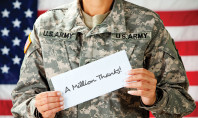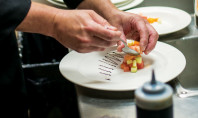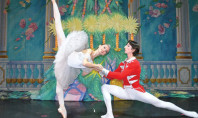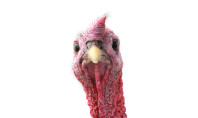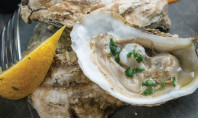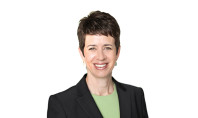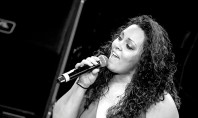Easton’s Peace Candle
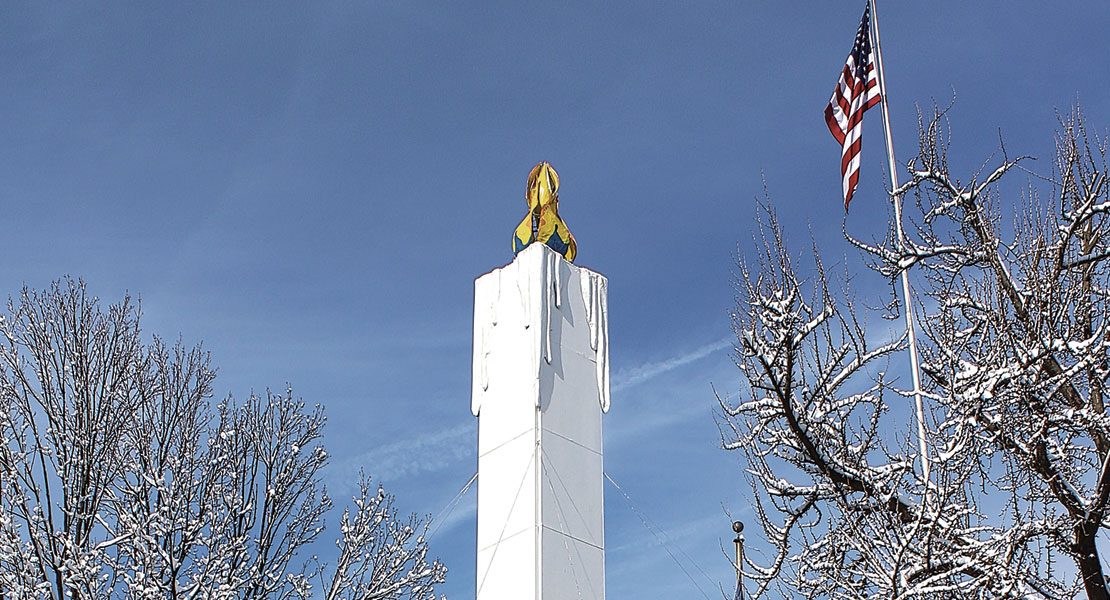
It’s a glowing symbol of the holidays. An event that thousands of Lehigh Valley residents look forward to each year. And a tradition stretching back more than six decades.
Ever since the first Peace Candle was first lit in Centre Square in 1951, it has become synonymous with the holiday season in downtown Easton. But what you may not know is that the iconic structure is actually the outgrowth of a much older, much more widespread city tradition.
Long before Bethlehem adopted the “Christmas City” moniker in 1937, it was Easton that was famous for its holiday celebrations. Throughout the 19th century – decades before other American cities had adopted the custom of decorating for Christmas – Easton’s residents adorned their homes with beautiful displays of evergreens, intricately displayed lights and carefully crafted ornaments. Although there is some debate over the issue, many scholars (including Molly Price, an internationally known gardening authority who wrote extensively for The New York Times during the late 1950s through 1970s) believe Easton was home to our nation’s first Christmas tree, citing 1816 as the earliest documented account. According to Price, “The German immigrants who settled in Easton, Pennsylvania brought their beloved symbol of Christmas with them and by the end of the 19th century, the Christmas tree had become a national feature of family holiday celebrations.”
For the people of Easton, however, the 19th century holiday traditions extended well beyond their homes. Local businesses crafted beautiful Christmas displays, while the Northampton Street Bridge was adorned with a breathtaking arrangement of lights. During the days leading up to Christmas, annual festivities included two large Christmas parades – one held in Easton and the other in South Easton – as well as pigeon shooting matches and a fox chase. The city’s benevolent societies and social clubs hosted dozens of Christmas parties and gatherings, while local churches hosted special musical performances and programs for children.
On Christmas Eve, the city’s streets were filled with costumed “Belsnickles” – a sort of grotesque version of Santa Claus who wore a slightly monstrous mask, carried a sack of candy in one hand and a whip in the other, and was popular with the Pennsylvania Dutch immigrants – and loud, boisterous “Fantasticals” – a group of revelers who wore outlandish costumes and would appear at people’s doorsteps to offer entertainment. In 1866, Easton’s city paper, The Express, captured the atmosphere by reporting that “men and boys dressed in most fantastic garbs paraded the streets in numbers and caused the most considerable merriment to those who were fortunate enough to witness their amusing costumes and fantastic tricks.”
By the early 20th century, however, many of these holiday traditions had begun to fade away. Belsnickles and Fantasticals no longer made their annual appearance, and city residents slowly stopped putting out their elaborate displays. Before long, Easton was no longer associated with Christmas celebrations – the honor instead going to Bethlehem.
For some city residents, this gradual slide away from tradition was deeply disappointing. More than a decade after lights last adorned the Northampton Street Bridge, Easton resident Mrs. Hutton Hughes voiced her thoughts on the matter by sending a letter to The Easton Express in which she urged the city to establish a new holiday program. Her note was met with overwhelming approval, and in early 1951, just months after its publication, the city founded the Easton Area Christmas Committee. With the stated goal of helping restore the city to its former “yuletide glory,” the organization’s first order of business was to determine what the focal point of the new decorations should be. After some debate, the committee decided that a Christmas candle, with its universal symbolism for peace and hope, would be most appropriate.
On December 10, 1951, Easton’s Peace Candle – or Christmas Candle as it was originally called – was lit for the first time. The seventy-five-foot tall structure stood atop a base of lush evergreens, its “flame” made of curved steel bars covered in yellow neon lights. For the inaugural lighting, which was attended by more than 500 people, Mayor Joseph Morris drew attention to the candle’s interfaith message of peace by inviting Rev. Herschel Halbert of Trinity Episcopal Church, Rev. Joseph Gausch of St. Anthony’s Catholic Church, and Rabbi Mordecai Thurman of Easton’s Jewish community to all participate in the celebration. Rabbi Thurman perhaps summed up the candle’s message best by saying it represented, “Warmth and blessed togetherness in a cold world, light to brighten the darkness and ignorance of the world, and cheerfulness for an unhappy, sick world.”
For the next decade, Easton’s candle was rebuilt each year, while the annual lighting ceremony quickly developed into a city tradition that attracted hundreds of eager onlookers. But by the 1961 season, years of withstanding harsh winter weather had taken a toll on the plywood structure. That year, the candle was deemed no longer safe to display and, without the funds necessary to repair it, it was put into storage.
Today’s candle, which has a steel infrastructure, stands 106 feet tall and is considered the largest non-wax candle in the US.
For the next five years, the candle remained packed away, and Centre Square was instead decorated with dozens of Christmas trees and strings of lights that draped down from the monument in an umbrella shape. This practice continued until the mid-1960s, when city residents voiced a desire to reinstate the candle. With the help of local craftsmen, who donated time and materials, the structure was repaired and once again erected in time for the 1966 season.
Two years later, in 1968, the candle was rebuilt as a new fiberglass structure. This second version lasted until 1990, when it was replaced by the third and current rendition. Today’s candle, which has a steel infrastructure, stands 106 feet tall and is considered the largest non-wax candle in the US. Were it not for the Schlitz Candle of Hesse, Germany, which tops out at 138 feet, it would potentially be the tallest in the world.
Although the candle has come to mean many things to many people over the past decades, it has, perhaps most notably, been dedicated on several occasions to members of our nation’s armed forces. Due to its symbolic nature, it has also been the site of several peace demonstrations, including one in which a group of citizens urged the city to leave the candle standing until end of the Vietnam War. Their petition, printed in The Easton Express in December of 1972, read in part, “We therefore request… that the candle in Centre Square be renamed the Peace Candle and that… [it] remain in place until an agreement is signed, all troops and prisoners returned, and the war in Indochina ended.” (Although the candle had, on occasion, been referred to as the “Peace Candle”, it was never
officially named this.)
Although their request was ultimately denied due to liability concerns, a similar episode was repeated during the winter of 1990 (the current candle’s first season standing), when approximately 500,000 Americans were fighting overseas in the First Gulf War. To show their support for the troops, Easton residents decorated the candle with hundreds of yellow ribbons and again petitioned to keep it in place until the war was over. This time, city officials agreed, and the candle remained standing until a few days after hostilities ended on February 28, 1991.
Today, thanks in large part to the support of private individuals and local businesses, Easton’s Peace Candle tradition continues on. Although the Easton Holiday Committee officially disbanded in 2013, the city’s Main Street Initiative now oversees the candle and the lighting ceremony, which in recent years has grown to include a variety of family-centric events and activities.
“It’s a great evening that brings the entire community together,” said JoAnn Durante, Main Street Initiative’s Peace Candle Committee Chairperson. “We all work as volunteers to make this happen, and we are extremely grateful for the support of our sponsors. I grew up in Easton and have wonderful memories of the candle lighting ceremony, so this is one tradition I would certainly like to see continue forever.”
Sources:
Northampton County Historical and Genealogical Society Archives
The Express Times Archives, Easton Library
Easton Main Street Initiative
The First Christmas Tree in America: Holiday Customs in Nineteenth Century Easton by Charles A. Waltman (1985)
“Gardens; Tannenbaum Traditions” by Molly Price, The New York Times (Dec., 20, 1970)

